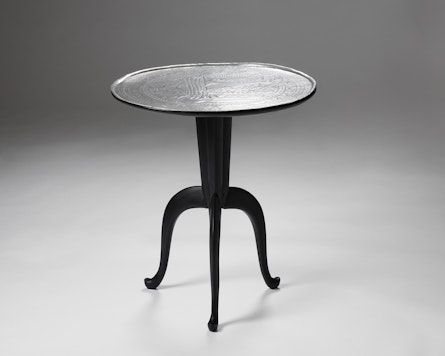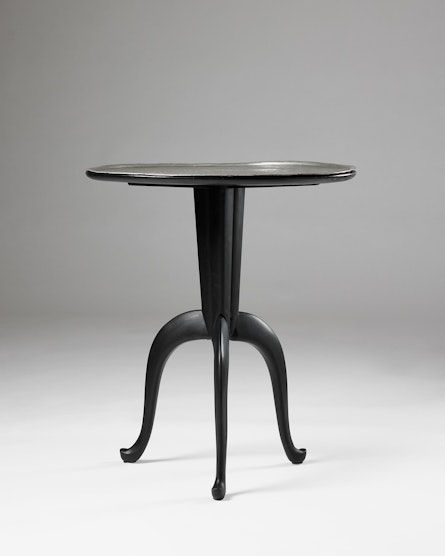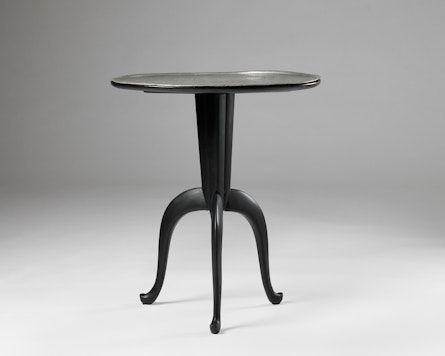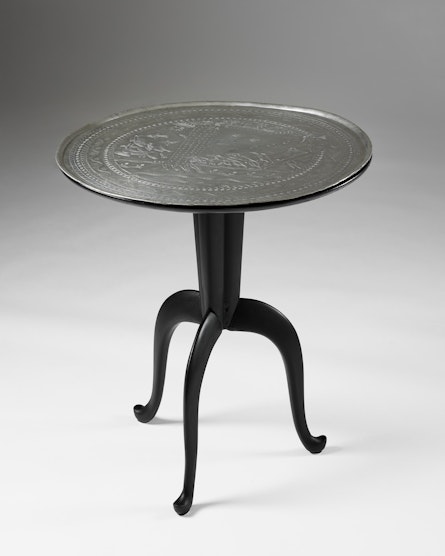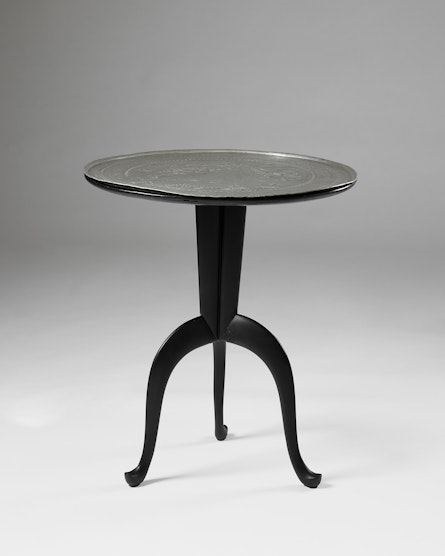Tray table 'The Hunting Tray'Designed by Anna PetrusSweden, 1920s
Price on Application
Reference number: 8543
Tear sheet: Download
Material:
Removable round tray in tin-plated copper. Set on a three-part turned leg structure in blackened wood.
Measurements:
H: 70 cm / 2' 3 9/16"
Dia: 60.5 cm / 1' 11 13/16"
Dia: 60.5 cm / 1' 11 13/16"
Description:
A rare and significant example of Swedish Grace design, this round tray table—known as “Jaktbrickan” (The Hunting Tray)—was crafted circa 1922–1925 in Anna Petrus’s own studio in Stockholm. The removable tin-plated copper tray features an intricately chased and punched hunting scene and is signed “A. Petrus.” It rests on a three-part turned leg structure in blackened wood, possibly executed by architect Uno Åhrén.
The tray tables were later exhibited at, among other venues, the Gothenburg Jubilee Exhibition in 1923 and the Exposition Internationale in Paris in 1925. Petrus received virtually unanimous praise from critics, securing her place as one of the pioneers of modern metal and pewter art in the 1920s.
The “Hunting Tray” also carries a deeply personal connection to Petrus. It was given as a wedding gift directly from Anna Petrus to her brother-in-law.
The tray tables were later exhibited at, among other venues, the Gothenburg Jubilee Exhibition in 1923 and the Exposition Internationale in Paris in 1925. Petrus received virtually unanimous praise from critics, securing her place as one of the pioneers of modern metal and pewter art in the 1920s.
The “Hunting Tray” also carries a deeply personal connection to Petrus. It was given as a wedding gift directly from Anna Petrus to her brother-in-law.
Anna Petrus (1886–1949) was a pioneering Swedish sculptor and designer renowned for her distinctive contributions to the Swedish Grace movement of the 1920s. Her work is celebrated for its bold forms and intricate detailing. Petrus gained international acclaim at the 1925 Exposition Internationale des Arts Décoratifs et Industriels Modernes in Paris.
Provenance:
Wedding gift in 1927 to Gunnar Lyttkens (1898–1962) and Dagmar Engström (1900–1993) from brother Harald Lyttkens (1889–1962) and his wife Anna Petrus (1886–1949).
Subsequently inherited by the current owner.

